
Arthur Goulart
-
Posts
38 -
Joined
-
Last visited
Content Type
Profiles
Forums
Gallery
Events
Posts posted by Arthur Goulart
-
-
-
This week I went through a few of Waldemar's topics, and got inspired to show my progress on "reverse engeneering" the lines of Wildmanden, and to eventually get to a full 3D model of her. While I'm far from being as knowledgeable as he is in all matters ship drafting, I believe I can go a long way with good sources, the input from the great people on MSW, and a fair amount of trail and error. In that sense, I insist that you guys point out where I've got something wrong, even if you're not sure of it yourself, we might learn something by looking into it.
My limitted experience trying to redraw plans was with an english 23ft launch. I've gone further along with it than what I have posted, but my law school's final paper got in the way of the project, and the drafting attempt got me to realise that I wouldn't be able to reach my end goal to a standart that would satisfy me. You see, the main reason I actually picked that specific launch to reconstruct was because that's the size of launch Inconstant (1783) would've carried. At the time, I meant to eventually reconstruct the frigate, but through my trials with the 23ft boat I learned that redrawing her plans would require more guesstimates about various dimensions and designing techniques than I'd be happy with. That got me back to the ship choosing board, until I eventually landed on Wildmanden, and other A. Turesen (her designer) boats.
Why Wildmanden? To begin with, I find her lines very pretty: she's got a good amount of sternpost rake, unlike most of the french earlier "true frigate" designs; it isn't too long relative to its breadth nor does it have extreme tumblehome, which, again, are recurring themes with french designs; unlike it's english counterparts, it's body looks much sleeker, the swan sloops, for instance, feel top heavy to me; the distance between the main rail of the beakhead and the upper cheek rail on english sloops and frigates is often too narrow, and the main rail leaves the ship's hull too low. Most importantly though, the many Wildmanden plans present an abundance of dimensions and illustrate and explain many drafting techniques that are paramount to an accurate reconstruction. Not only Wildmanden, Turesen has left plentiful drawings, equally detailed, and as the Danish Archives make those available in high resolution, they make for excellent comparative material. Specially relevant for this reconstruction are those for the Hvide Ørne (1753), another really beautiful frigate in her own right; A1246c, a brig design that was never built; and, surprisingly, the plans for Fredericus Quintus (1753), a full on first rate ship of the line, that, in spite of being of a different league of ship, was drawn by many of the same rules observed on the aforementioned designs.
Above, the plans for Wildmanden. Although a fregatten by Danish denomination, her dimensions are more akeen to a british sloop of war, or a french corvette.
The Krigsmuseet holds a contemporary model of Wildmanden, unfortunetely, I could only find two photos of it. If somebody happens to have some more angles of the model or otherwise happens to visit the museum and would be willing to snap me a couple more images, it'd be much appreciated!
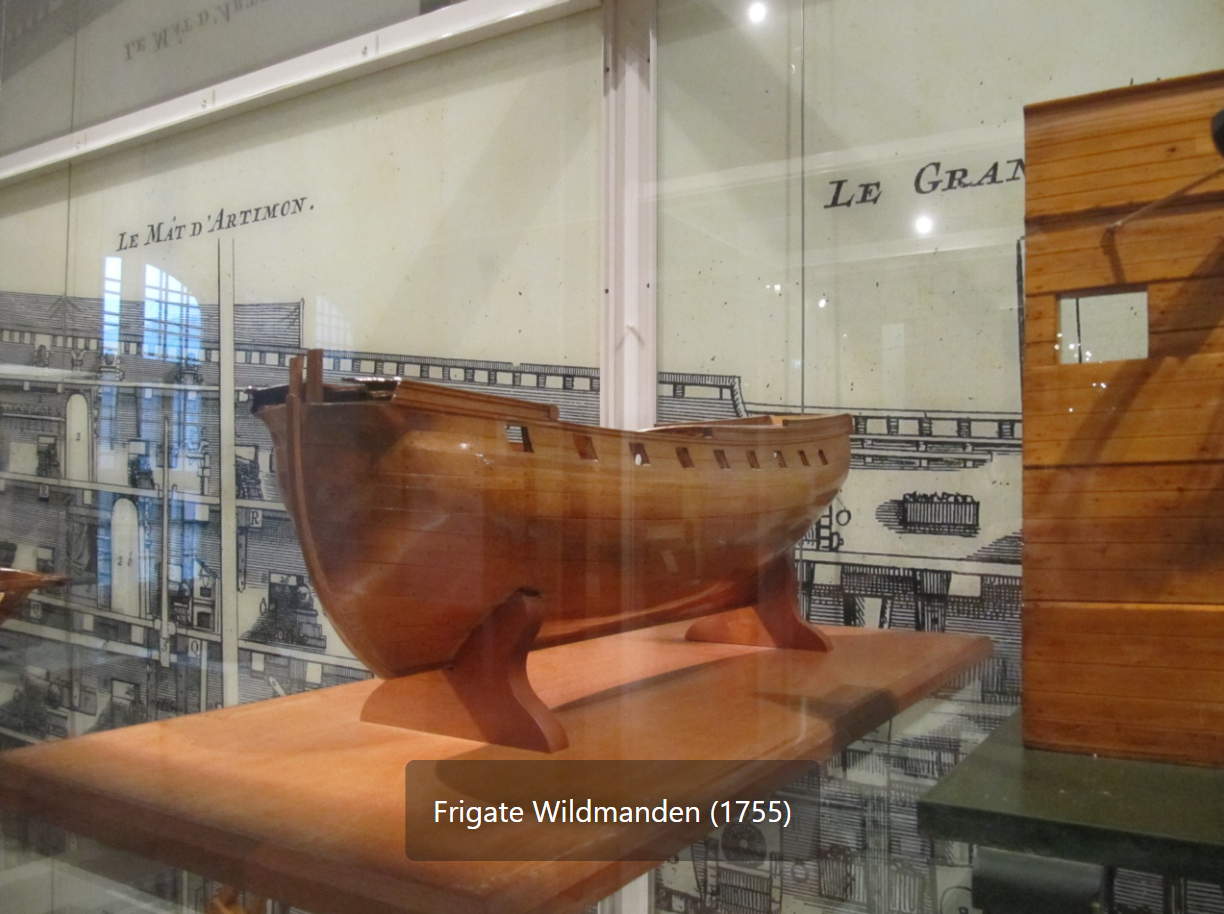
(credit: modellmarine.de)
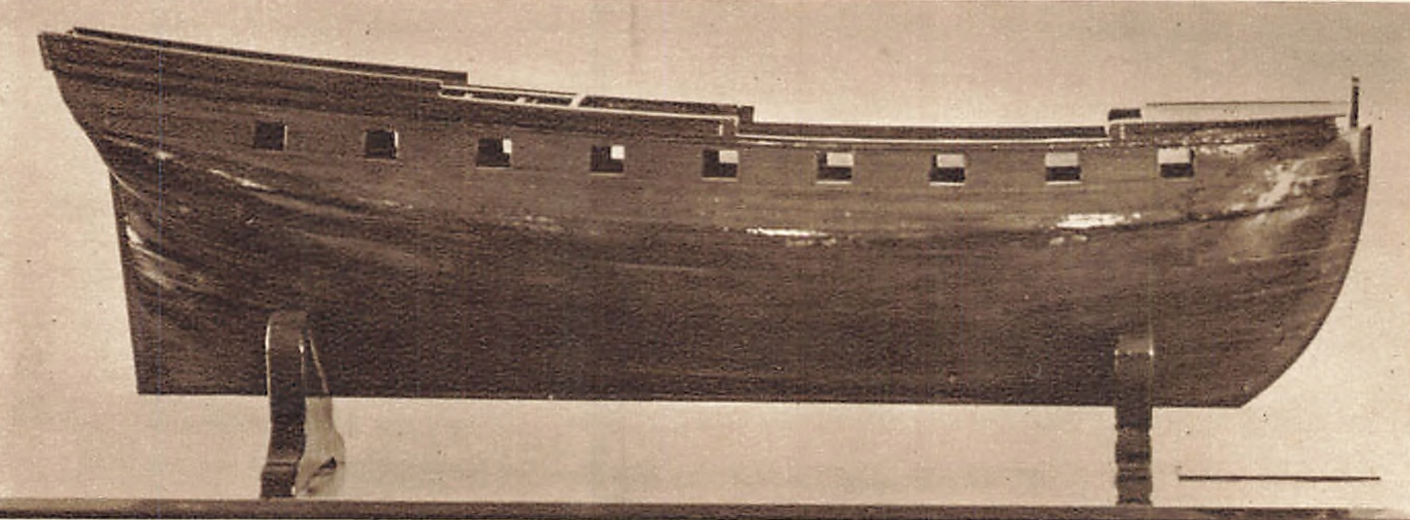
The goal here, at first, is to showcase and discuss the methods for forming the different lines of the ship, together with findings in proportions. I hope to have you along. The next post, we'll begin by adressing wales, gundeck, and sheer line.
-Arthur
- Kenchington, druxey, ccoyle and 1 other
-
 4
4
-
On 11/20/2025 at 3:41 PM, Beckmann said:
Hi Arthur,
I recently posted some of my photos on our german homepage, where I am member of. https://www.arbeitskreis-historischer-schiffbau.de/mitglieder/ontour/schiffsmodelle-in-daenischen-museen/
Matthias, thanks a lot for the link, those are some great references. I probably will be bothering you more down the line for some extra photos 😁. I wonder how much of Fyen's rig was kept original. Also, thanks for the feedback on the book.
And, @TJM thank you for pointing me towards the guns and the cadets' book. Good thing too that going through the archives is quite fun, a bit of a treasure hunt.
Cheers, guys!
- TJM, Keith Black and Canute
-
 3
3
-
Matthias,
This build is coming along great! Awesome atrention to detail and I love the subject!
I've read through your topic, and some questions in regards to sources came to mind. You mentioned 'Danske Orlogsskibe 1690-1860', how good is the book?? Is it aimed on the general public, or does it go in depth about specific danish shipbuilding practices? Does it present sources outside what is available on the Danish Archives or otherwise online? Are there other titles you'd point to that discuss danish practices of the period?
You've presented some great photos of the Tre Kroner model and others, some taken by @TJM. I am having a hard time finding Krigsmuseet's model's references online, would you guys mind sharing some more of those? Maybe on the gallery of contemporary models of MSW? I'm messing with some Danish ships myself, specially Wildmanden, that I'm the furthest along with, and taking a look at those models would really help clarify some details the plans often omit, such as anchor linings, oar ports, fenders, rails, cheek fillers, etc.
With regard to the artillery, how are you finding those drawings? What I mean is, while there are listings referencing specific ships and their respective drawings on the Danish archives, I'm not aware of the same thing for guns and other various fittings. To find those, I usually just look through a bunch of plans until I eventually find something useful and then download it. Am I being dumb? 😆. You also mentioned instruction manuals for cadets and the shipyard, could you link me those?
Thanks a lot, Matthias! Looking forward for the continuation of this incredible build!
-
14 hours ago, Waldemar said:
Oh my...! I feel a little guilty now, because it's like you're starting to follow my footsteps into the abyss of madness 🙂. Or, into a hitherto hardly explored space. I didn't expect you to approach it in such a meticulous way...
Anyway, one can see a lot of regularities on your numerical chart, which clearly suggest that the designer used the same procedure and set of proportions in most of the cases you measured. This kind of juxtaposition can help you to reveal the design logic of this particular boat, if that is your wish and intention
Yeah... The abyss has stared back at me, nothing I can do about it now 😆. I can already see some ways the comparison will be useful in the upcoming steps, I'll probably be able to improve, or be reassured of my design for the boat's rake, sternpost and rudder. Having those four other plans is quite the unique opportunity to understand what was the designer's process.
And on the topic of Marmaduke's Naval Architecture, I'm actually kinda surprised I had no idea that book even existed. I had a quick look through it, it seems to be just the thing for this project, much more complete than Steel's when it comes to whole moulding, and that plate 1 find was a great one, @iMustBeCrazy!
And btw, do any of you have a pdf for The Shipbuilder's Repository? I have looked everywhere for that and found nothing but crazy expensive physical books.
-
On 11/23/2024 at 8:08 PM, bricklayer said:
Arthur,
doesn`t the free trial of Rhino expire 30 days after 1st installation on your computer?
If you learned the basics and modeled the boat`s hull within 30 days, then I really admire your skills.
Michael
It's actually 3 months of free trial, Michael. My biggest struggle was more understanding all things shipbuilding related than the program itself 🙃
-
Following @Waldemar's suggestion, I took to measuring. Not only I looked for proportions on our 23ft launch, but I browsed around RMG's website and found a couple more launch plans dated 25th of April 1785 by Adam Hayes, namely ZAZ7353 (21ft), ZAZ7352 (22ft), ZAZ7351 (26ft), and ZAZ7348 (30ft). I figured, if there is some proportional rule to the construction of these boats, comparing the plans would reveal it. So, I did the unthinkable, created a spreadsheet. Here are the results:
I hope the measurement descriptions make sense. Everything is in inches. The "/lenght" columns refer to the previous measurement divided by the lenght of the boat.
I was also curious if this exercise could help me with the question for the height at which the lower points for forming the sternpost and the rudder are set, if at the height of the base-line, or at the height of the keel's base. An example will make it more clear, the sternpost's outer edge is a line that passes through the aftmost edge of the sheer strake, and through a second point down below, that is either at the height of the base-line, or at the height of the keel's base, I don't know which.
Although the spreadsheet gives pretty damn similar proportions between the different boats at both the base-line's and keel's base heights, I think those at the base-line's height make more sense, that is 1/30 of the lenght = sternpost width, and 6/100 of the lenght = rudder width, at least for the three longest boats, .
What do you guys make of it? Do you see any other proportions that also make sense?
-Arthur
- Trumper07, iMustBeCrazy, mtaylor and 2 others
-
 5
5
-
Guys, thank you a lot for the posts. This little into the project, I already got some valuable insights!
15 hours ago, iMustBeCrazy said:You might like to look at ZAZ7239, it gives some insight including dimensions down to the quarter inch and varying gaps between stations.
Sheeesh, those are really inconsistent gaps. Can you see some logic behind them?
14 hours ago, Waldemar said:Nice. And what about trying to find the lengthwise position of the master frame in a proportional rather than just dimensional way? There are several possibilities to check – as a reference length you might eventually find the length between perpendiculars, the length between posts (if different from the previous one), the length of the waterline or the length of the keel (both tread and touch).
You could also check the ratio between rakes of the stem and stern posts. And their ratio to the total length as well, both individually and as the sum of the two.I like the way that sounds, Waldemar! But, how do I know which proportions to look for? I mean, any division between two lenghts will give me a proportion, how would I know what is correct? I've had a look through The Elements and Practice, in the 'GENERAL OBSERVATIONS ON THE PROPORTIONAL DIMENSIONS' chapter, and I couldn't quite make out something aplicable. Maybe I can get somewhere by comparing different boat plans?
10 hours ago, Waldemar said:Arthur, if you decide to investigate this at all, especially the lengthwise position of the master frame and the like, I'll just hint, just to be safe, that Rhino's command ‘divide curve by number of segments’, is very handy for this purpose.
Got it!
13 hours ago, vaddoc said:Very nice drafts Arthur! Nice surfaces and offsetting.
You ve fallen down the rabbit hole of CAD - I suspect you ll never find the way out!
I think Rhino is fine for our purposes, which is basically lofting boats and getting patterns to cut frames etc and is very user friendly. But I think any CAD can do this. For advanced rendering maybe other options are better but to build a boat, this is not needed.
In the 18th century plans were not hugely accurate and thy did not to be - just shim any gap. However paper gets distorted after all these years and CAD is very unforgiving so some lofting is still needed but not too much - the wood will correct lots of tolerances.
Perhaps have a look at my longboat, maybe you ll avoid some of the mistakes I made.
Best wishes
Vaddoc
Ohhh I will not indeed, Vaddoc! And drafting in CAD is quite addicting. Hours will go by and I won't notice it. I definetely will spend some time taking a good look at your longboat!!
-
On 11/20/2024 at 8:37 PM, 3DShipWright said:
@Arthur Goulart - BTW, I didn't mean to seem negative on Rhino.... still a good software, and I'm excited to follow your build.
By no means! You guys just gave me something new to fiddle with 🤣. I went with Rhino because I thought it was the best out there for our purposes, but nop. I'm sure glad I'm still just using a free trial, because Rhino is quite expensive. A free and better alternative? Count me in. By the way, those boats look awesome.
-
A little disclaimer at first, when measuring distances off of the plans, I'm looking for the most logical values. That means, I don't think that when setting a line someone would go with the "7/64th of an inch" option, specially because, keep in mind, these plans were drawn at scale. When two possible values get close to the lenght of a given line, I'm picking the rounder one. As a general rule for this project, 1/2 is as far as I am going when dividing inches, unless there is good reason to think a more specific value is correct.
Onto the first steps.
The first view of the ship to be drawn is the sheer plan, that is, the side view. We start off with the base-line, which coincides with the upper edge of the rabbet of the keel, on ships, it ends perpendicular to the fore and aftmost edges of the lower deck. On boats, however, it stretches from the aftmost edge of the sheer strake to the foremost edge of the stem, and represents the lenght of the vessel, so, in our specific case, 23ft. From both ends of the lines, two perpendiculars are drawn, these are important references for other lines to be set.
Next up, to set the midship perpendicular, which not always is precisely amidships. Here it is 10'10-1/2" from the foremost perpendicular. From it, the other, evenly spaced, perpendiculars are drawn. For our launch, they are a weird 1'2-3/8" of one another. I came up with that for two reasons: that value aligns much better with the H and 9 perpendiculars (the outmost ones) of the original plans than a 1'2-1/2" spacing; and, because the plans for a 30ft launch (ZAZ7348), by the same author and date, show, again, the same 3/8" spacing, 1'3-3/8", in this latter case. I wonder the reason behind the odd choice.
The stem is mostly formed by arcs centered 3'4" up from the base-line and 3'10" aft from the foremost perpendicular. That point is reassured by its correspondence with a little dark spot on the original plans, that I assume is where the point of the draftsman's compass laid. From it, with a 3'5" radius the outer edge of the rabbet is set; with a 3'4" radius, the inner edge of the rabbet; and, 3'2-1/2", the inner edge of the stem. These latter two arcs, however, are fictional, they do not correspond with how the finished boat might've looked in the past, and will not stay this way on the finished 3D model. More on that later, they are good enough for now.
To the keel and outer edge of the stem. I previously thought that the base of the keel was a little too wide on the sheer plan: the body plan shows a narrower version (more like 6" from the base-line instead of the 6-1/2" shown in the sheer view), and that means that a 3'10" radius from the same center already discussed would intersect perfectly with both the foremost perpendicular and the bottom of the 6" keel. But, the neat result was a bit too off in relation to the plans to my likeing. One particular detail came to my attention, 3'3" from the foremost perpendicular there is a sharp edge, that suggests a not too perfect junction between the stem's outer edge and the keel's base, a bug or a feature? I came to the conclusion that it is, indeed, a feature. Many plans and models show such an edge (the Medway longboat for example), and notably, that 30ft launch (ZAZ7348) by the same author and date also features that edge, and there it looks even more intentional. So, I now have adopted a 6-1/2" keel width, the outer edge of the stem is made by an arc that is centered on the same height as the center of the other radii that form the stem - so they end at the same height too -, but that intersects the base of the keel 3'3" aft off the foremost perpendicular. That solution is much more in line with the plans.
- Arthur
- Waldemar and Thukydides
-
 2
2
-
On 11/19/2024 at 5:15 PM, Loracs said:
On this topic, any good reference on modeling ship with CAD software. I'm an utterly beginner planning to try using FreeCAD/blender, both of which I never really used. They are freeware and quite comprehensive though.
Loracs, I'm using Rhinoceros, I found it to be rather intuitive, messing around with it a little and some quick google searchs have gone a long way for me. I have not tried something different, so I can't compare. Rhino seems to be what most folks use here too. And, part of the reason I started this topic is that I haven't found one that adresses my questions regarding redrawing plans, so I hope to crowd source some knowledge through here.
-
-
So, I wanted a not too complicated to learn both 3D modelling and ship construction. I decided to go with a ship's boat, because you can't get much simpler than that for a first scratch project, and because the result might come in handy in the future for ships that, well, will be fitted with boats. Imagine the designer behind the plans had access to a CAD program, that is what I'm aiming to achieve. Thus, I'm looking at understanding how ship's lines were formed, so I can reconstruct this little launch from principle, not from merely tracing all the plan's lines. With that, I hope to get a more accurate model to the original designer's vision, by mitigating the limitations of the hand drawings and measurements of the time, of the 200+ years of wear the plans have been through, and of the distortion the scanning process might've added on top of it all.
On this topic, I'll be registering my progress, in a step by step manner. I insist that you guys point out where I've got something wrong, even if you're not sure of it yourself, we might learn something by looking into it! I'm expecting to make plenty mistakes, and the purpose to pick something simple is that I can start it all over again without pulling too many of my hairs off.
So far, my main reference has been The Elements and Practices of Naval Architecture, from '§ 2. OF THE CONSTRUCTION OF THE SHEER DRAUGHT OF THE EIGHTY GUN SHIP, FROM THE GIVEN DIMENSIONS' (p. 242) and onwards. Steel's book is aimed mostly at full on ships, but many instructions are aplicable to our purposes, many require a fair deal of interpretation - he is not the most clear and didactic, which is not helped by my still limited knowledge of ship building vocabulary, and by english not being my first language.
Why this 23ft launch was picked, specifically? I tried a couple different boats out, I made some sense of this one the faster. The stem's radii and those of the midship frame are really important dimensions that I struggled with on other plans, but that I fairly confidently figured out for this launch.
My take is that ship's boats were neglected subjects in their time, at least from a more technical stand point, and that today they likewise get less attention when compared to the more complex and exciting subjects, hopefully this will be a more thorough and complete reconstruction.
The next post, I'll take you back to the beggining of the model's construction, but, for now, I'll leave you with how the model is looking present-day:
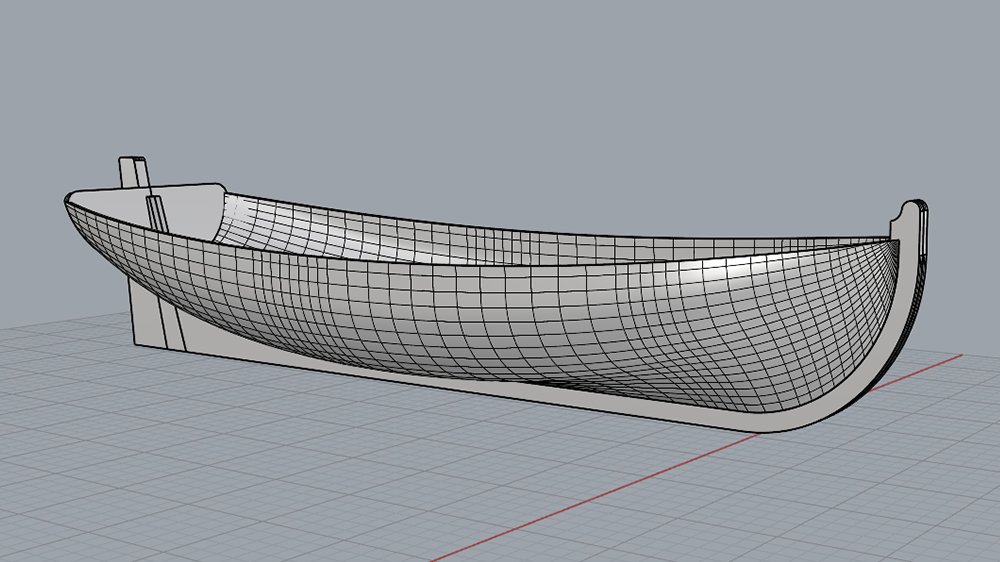
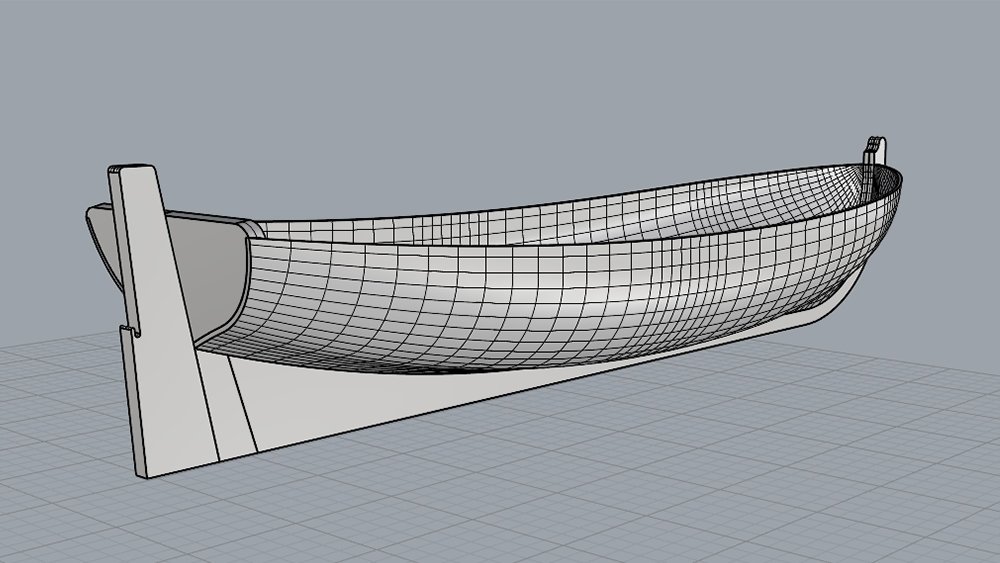
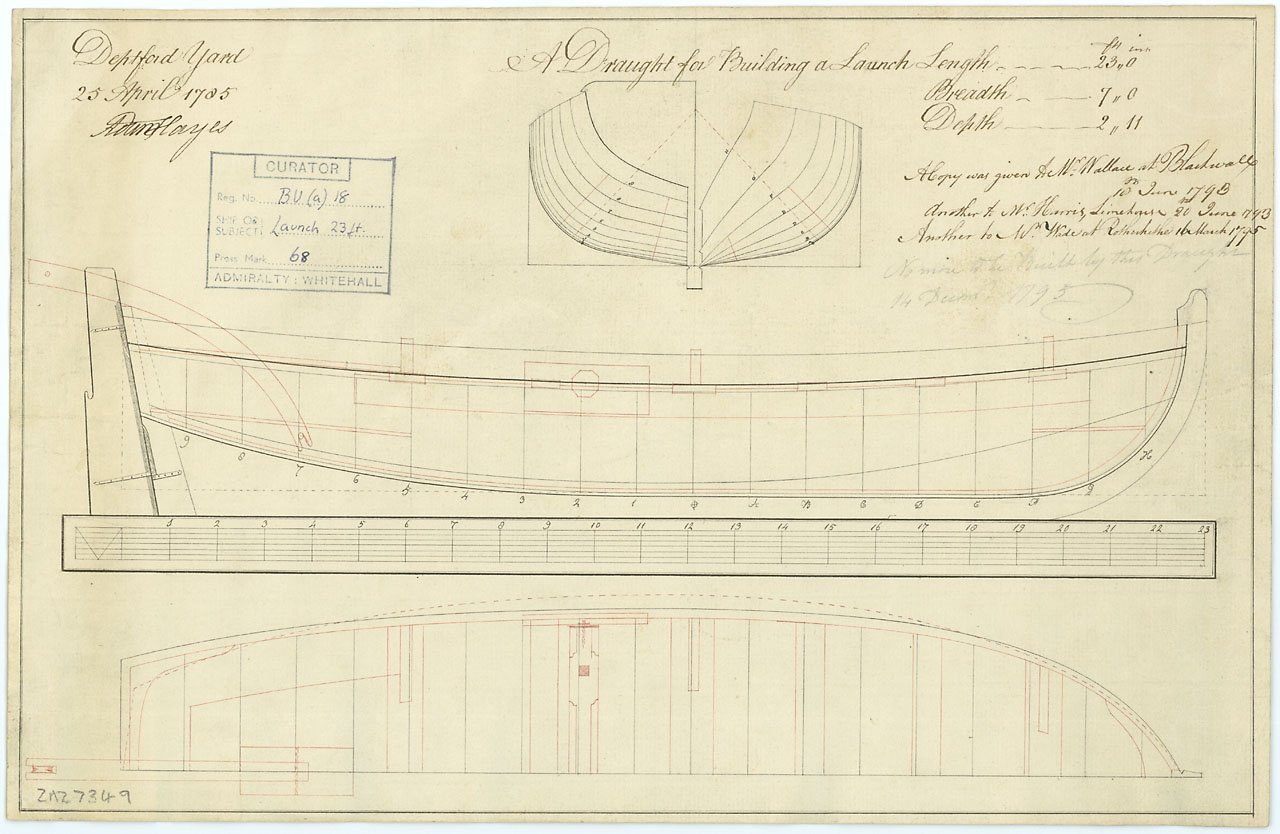
- Arthur
-
- Thukydides, yvesvidal, Ryland Craze and 1 other
-
 4
4
-
Incredibly neat work!
- Stuntflyer and mtaylor
-
 2
2
-
Chuck,
I've been silently admiring your work over the last few months. I'd really like to build one of your kits, but I can't really justify it atm. See, I live in Brazil, currency conversion makes costs pretty proibitive, add to that 60% import tax (I mean... That's insane). That, and I'm fiddeling myself through building a MSW Bluenose, but it's more of a scratch build project at this point, because the kit is really that poor, anyways, that's a tangent. The point is, I'd definetely buy that small boat if you were to sell it as a regular project. It looks like it will be a quick, well put together, relatively inexpensive kit, and I'm all for it.
Cheers!
-
-
I found Endymion on the RMG website, gents: https://www.rmg.co.uk/collections/objects/rmgc-object-81924. As per described by the Science Museum,
built in 1779, 44 gunner.
Funny, my untrained eyes wouldn't think such a beautiful ship came from those plans.
-
On 8/21/2022 at 5:42 PM, Retired guy said:
Hi Arthur how's the Bluenose coming along, and yes you are correct this is Mrs Victory have had since 2004 but been working on and off for the last couple of years.
Too slowly, Richard 😆. I'm really struggling to find the time to work on her, but so far, I'm happy with how it's coming along. I'm modifying the the kit pieces so they are more accurate to plans, and I'm improving on its construction method, for instance, I'm making the keel/stem as separate pieces, to be fitted down the line, once the planking is already finished. I'll be posting it all on my thread, but none of it is yet finished, so...
-
-
You love to see it, Retired guy's Bluenose update.
I take it the other ship you're distracted with is the chomky fella there on the background, Mrs. Victory?
- FriedClams, BenD and Dave_E
-
 3
3
-
On 4/16/2022 at 5:44 PM, Retired guy said:
Hi Arthur did write a reply to your question on my Bluenose hope you saw it and here are some more tips.
I read the instruction manual and went with the stages, they are very clear and I had no issues.
Make sure you add the reference line to the Keel pieces also the bearding line, and then add reference line to all the bulkheads ( this will help to see if you need to adjust any height issues) and at the same time trace and mark all bulkheads with side bevel on both sides and then sand these before installing this really does help down the road.
These are all the tracings I did
You can see the reference lines in this picture
Hope this helps and have fun
Regards
Richard
Thanks for the tips, Richard, on both threads!
Good that you mentioned beveling the bulkheads before installing them. I was planning on marking the bevel lines, but only sanding after installing all the bulkheads, is there any disadvantage to this approach?
-
On 4/15/2022 at 4:40 PM, Retired guy said:
Hi Arthur thanks very much for your kind comment hope what I have posted helps all Modelshipways Bluenose
Regarding the keel pieces they do not fit one another and it is the middle piece, lay the keel pieces on the drawing and line up the top if you have to adjust the keyways between all pieces do so then you will be adding some wood to the bottom of the middle keel piece.
From the picture you will see how much was added and also the left keyway you can see I added little stipes as well
8
Hope that helps.
Regards
Richard
It definetely helps, Richard, thank you!
Yeah... I think I'll have to adjust most of the keyways. On all three pieces one of the keyways aligns up perfectly, another one or two are similar enough to the plans - I think I can get away with just widening those a little -, and the rest of them diverge quite significantly. Also, like the middle piece, the forward one is thinner than it should be. Maybe I'm too picky, i don't know. I expected these laser cut parts to be more precise. If some error was inevitable, they could, at least, have thrown it to the overdimensioned side. Easier to remove material than to add.
By the way, happy easter, Richard!!
- Nirvana and Retired guy
-
 2
2
-
On 4/15/2022 at 8:08 AM, wool132 said:
If you haven't already found it, the build log by GenericDave is an excellent reference. The complete version is on his external website, SuburbanShipModeler.
As you stumble along, remember the inspiring words of Homer Simpson: "Trying is the first step towards failure".

Jonathan
Oh yes, I've found it! It's a very well written and well illustrated series of articles. Gary Brinker's youtube videos are also a great resource, I just wish they were higher resolution. I appreciate the tip and the wise Homer Simpson words! 🤣
13 hours ago, Keith Black said:Arthur, wishing you the best on your first steps into the world of wooden ship modeling. Building model ships is a lot like bird photography, it requires a tremendous amount of patience and never giving up.
I love that comparison, hopefully them birds have taught be something. Come to think about, it is probably no coincidente that I'm interested in both these fields.

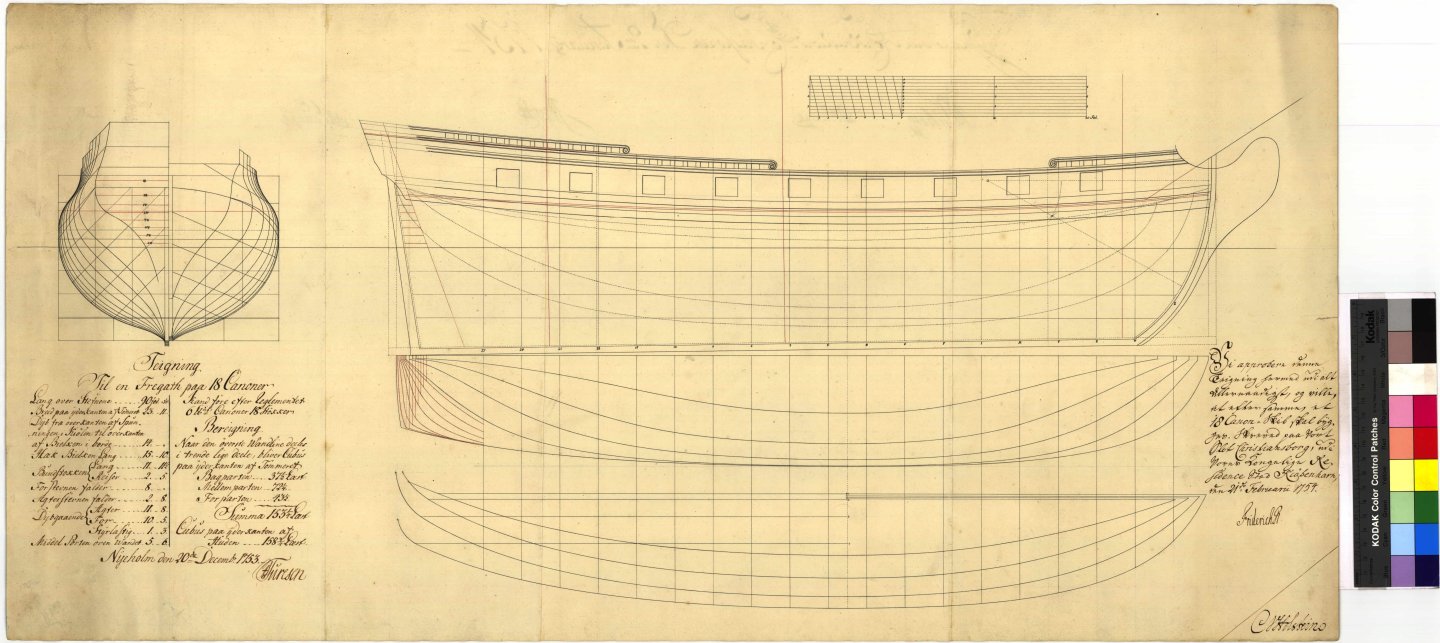



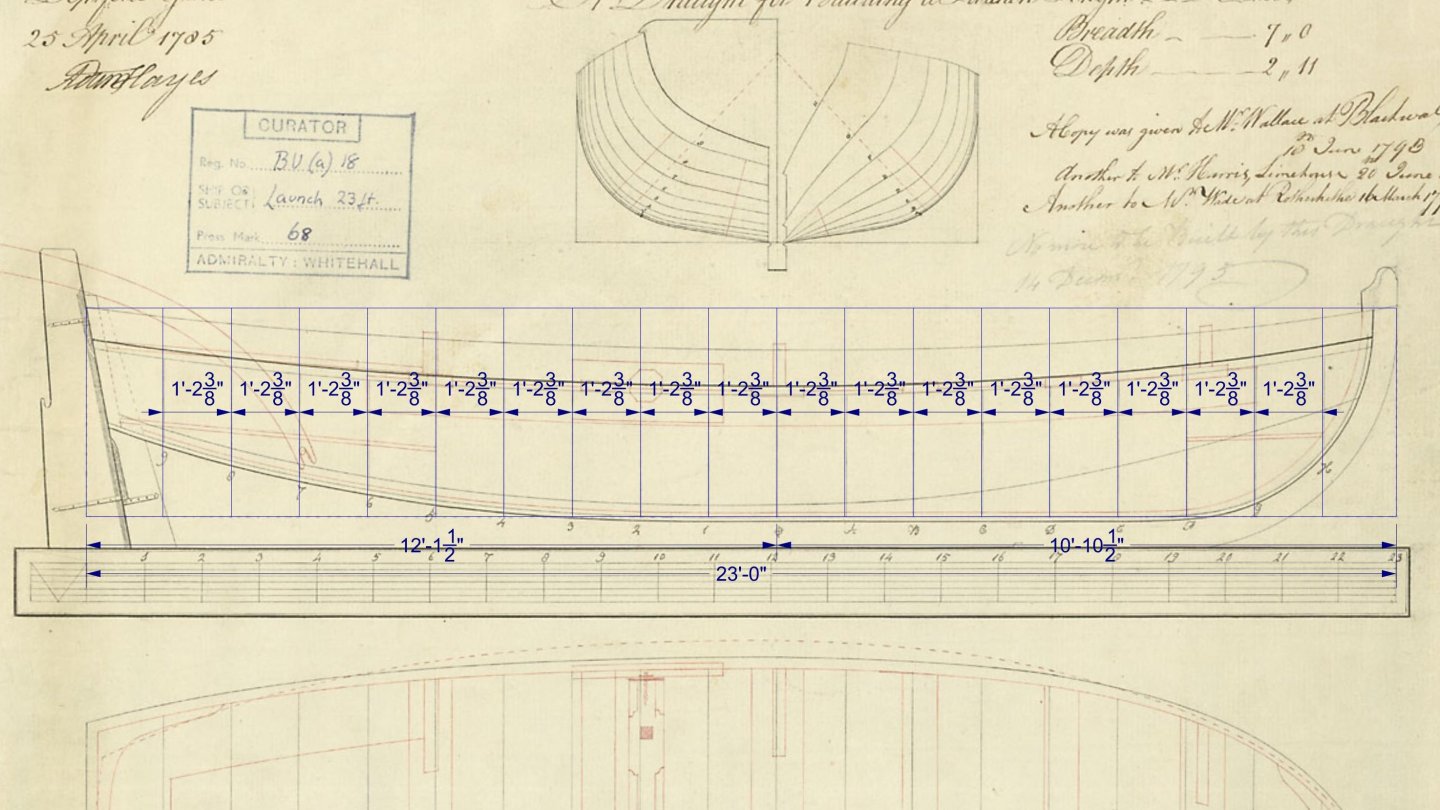
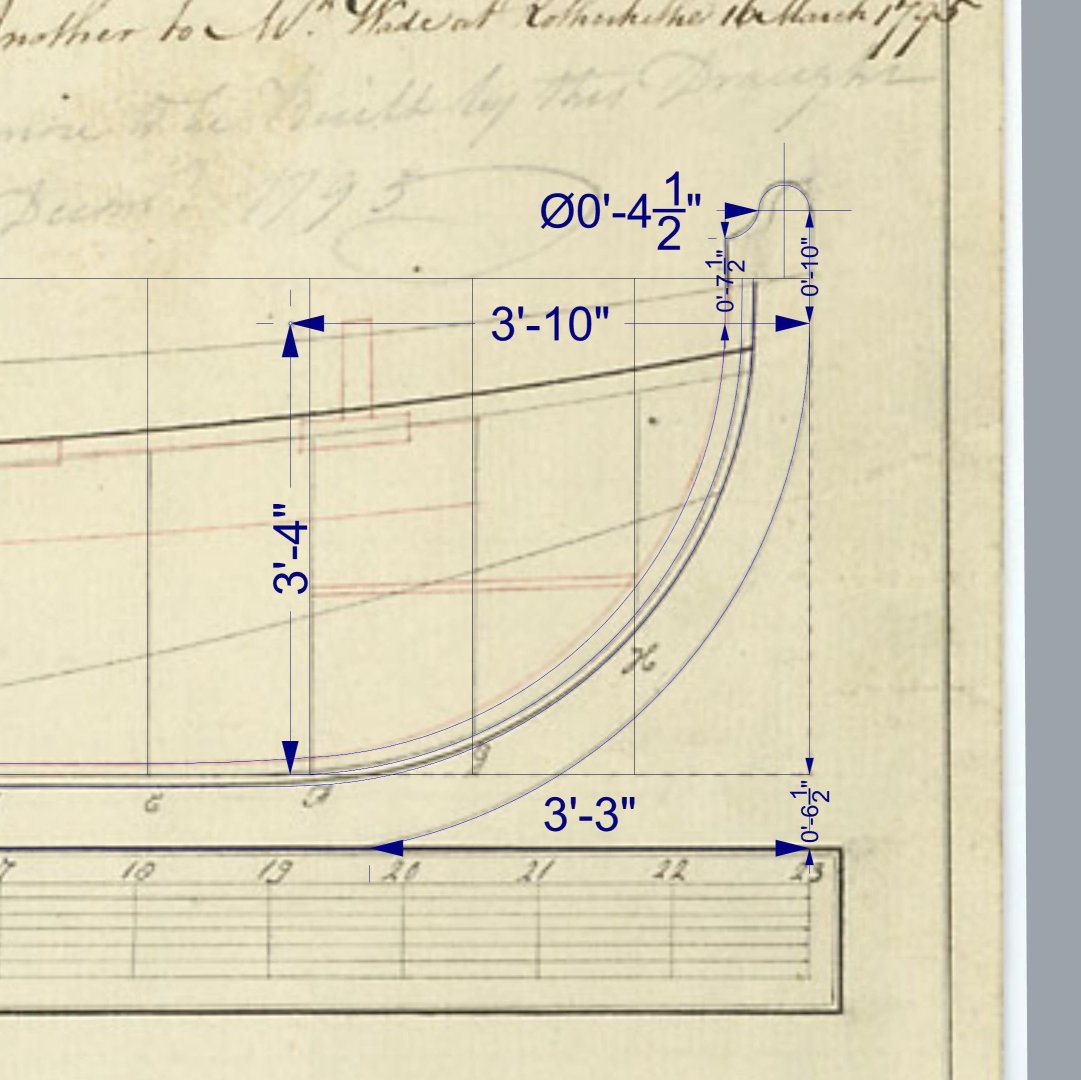

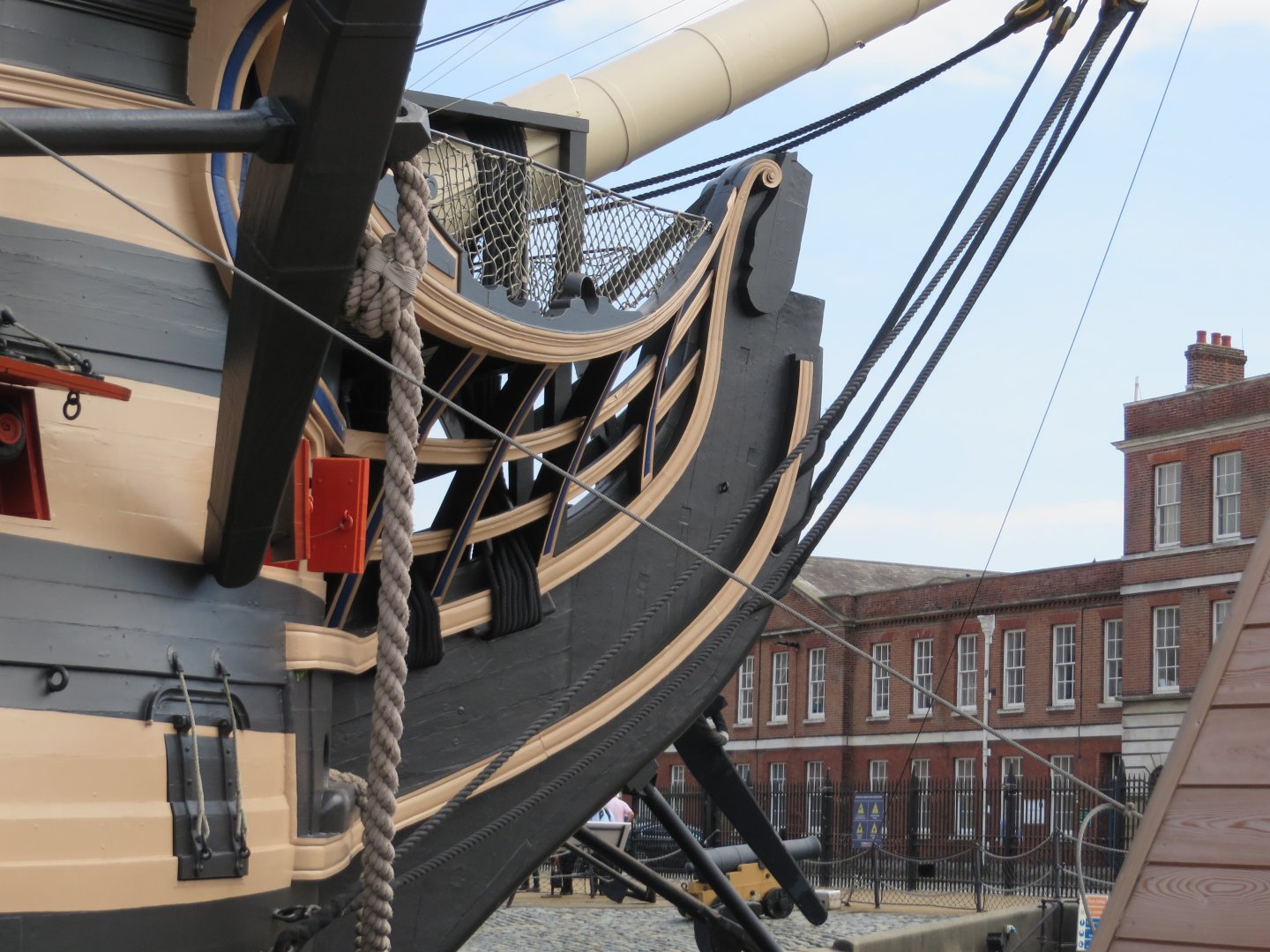

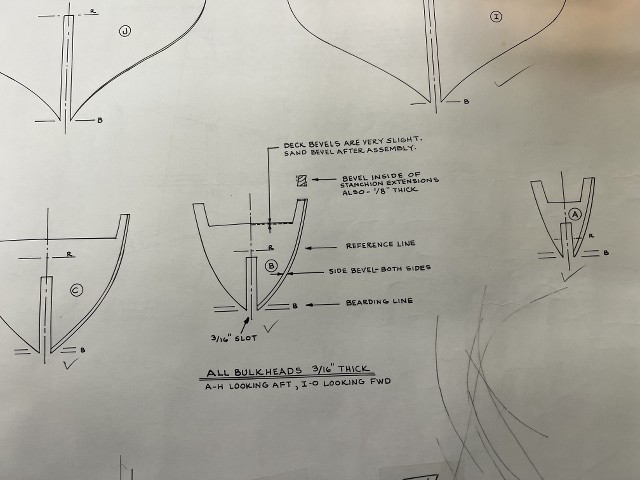
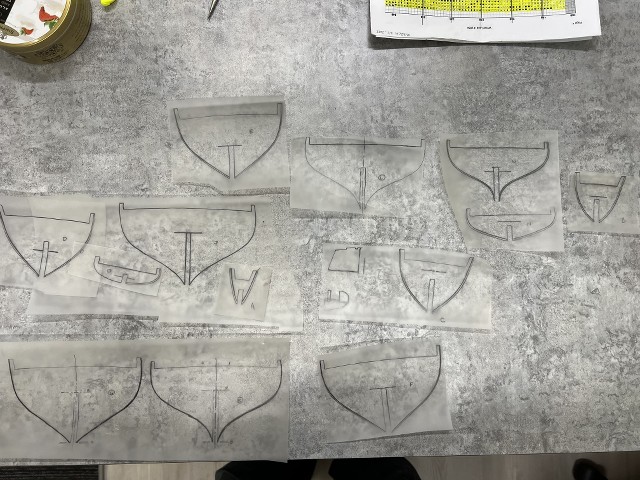
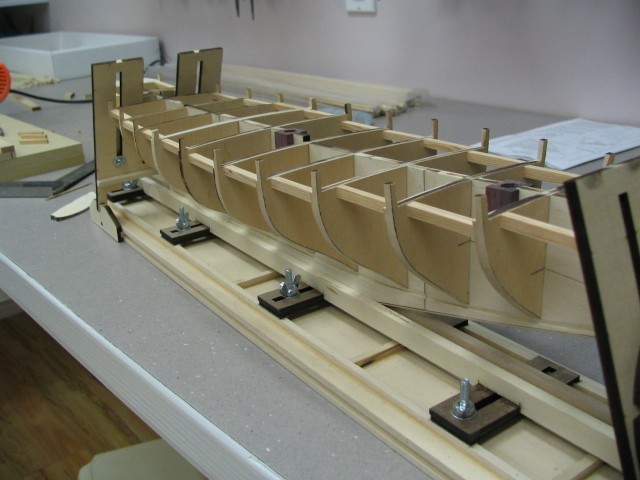
Wildmanden 1754 by Arthur Goulart
in CAD and 3D Modelling/Drafting Plans with Software
Posted · Edited by Arthur Goulart
There are some outstanding contemporary models for sure, not surprisingly, when you consider some of them were made for the royal, some were made on comission by important people, some were prized gifts. @Beckmann a couple days ago linked me to an article of his that showcase some of the finest Danish models: https://www.arbeitskreis-historischer-schiffbau.de/mitglieder/ontour/schiffsmodelle-in-daenischen-museen/ .I take it you're probably already familiar with the models on RMG's website, besides that, I'd suggest you check out the Roger's Collection, the collection of the Musée National de la Marine, the Museo Naval de Madrid has a lot of their models on their instagram page, be aware though, that is one rabbit hole that you can't get out of 🤣.
Happy to have you here @druxey! You touched on a good point there, the sheer plan is deceiving with regards to the wales. The 'midship section plan' (or however I should call it lol) suggests the ship wasn't built with two standing out wale strakes, rather, a more french approach was taken. The space between the lower and uper wale strakes is filled, and the planking gradually diminishes from the lower strake towards the rabbet:
So, what I'm making of the model is that the wale line is actually here:
But then again, very hard to tell. Hopefully some better photos can clarify it in the future.